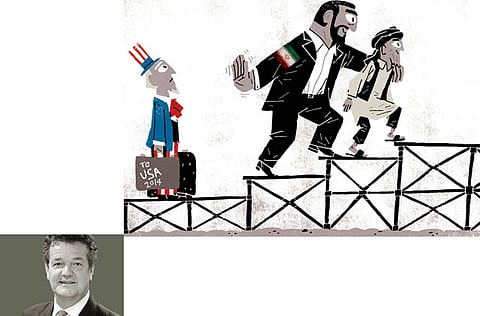Iran’s consolidation of position in Afghanistan
ISAF’s withdrawal leaves a vacuum that Iran seeks to fill in

Iran’s strategic ambitions are not limited to looking West into the Arab world and the war in Syria. It is also looking East, where it has an active alliance with China and a working relationship with India, but closer to its borders, Iran is working hard to build its influence in Afghanistan.
After some years of hard work, Iran is now well-positioned to look after its own interests once the Americans and their International Security Assistance Force (ISAF) allies wind down their presence after their 2014 deadline.
Even if they have had some contacts, Iran hates the prospect of the Taliban regaining any power in Afghanistan, as their radical Sunni agenda is totally opposed to what the Shiite Iranian leaders stand for. Iran’s hatred of the Taliban was so vehement that it was even prepared to, with their arch-enemy America, harm the Taliban.
Iran was ready to support the American invasion of Afghanistan in 2001 and George W. Bush made a serious mistake when he did not take up Iran’s offer of support.
To this day, Iran wants any talks with the US to cover more than the nuclear issue and the Iranians believe that when they offer to build a joint strategy on Afghanistan, they are offering America a major advantage.
In January, a senior Iranian official, Hussain Shaikh Al Islam, said Iran “can help the US have an honourable and low-cost withdrawal from Afghanistan” and added that Tehran was ready “to hold talks with Washington just like it did before US troops pulled out of Iraq”.
Iran is deeply offended that Washington has steadily refused to recognise this and it has made useful preparations to go it alone in Afghanistan. It always had close relations with the people in the west of Afghanistan with whom they share a language and the Iranians have built a strong presence on the ground by working closely with the leaders and warlords of Herat, the largest city in west Afghanistan.
The long-established warlord and later governor of Herat, Esmail Khan, had good relations with Iran. As a Mujahideen leader, he had helped launch the war against the Russians and he led the western command of Burhanudeen Rabbani’s Jamia-e-Islami from Herat.
During the chaos of the war against the Taliban in 1995, Khan lost Herat when his ally Rashid Dostum changed sides. He fled to Iran with more than 8,000 men and he only regained Herat after he had led his men to fight with the Northern Alliance and the Americans, after which he became governor of Herat for several years.
However, in addition to supporting such warlords, Iran is building a more lasting presence. Millions of Afghans live in Iran, having fled the violence of their home country, and Iran is the main supplier of electricity to Herat.
Iran also uses the Imam Khomeini Relief Committee (IKRC) as an active aid agency to run an extensive network of projects across Afghanistan. In Heart, the IKRC has built a library, schools, clinics and tarred roads.
The Wall Street Journal reported that the library is well-stocked and offers rooms where pupils can learn English, computer science and maths, even if it also holds commemorations on the anniversary of the Iranian Revolution.
The Iranians are also anxious to get their message to a wider public through Afghanistan’s vibrant media scene and Iran has helped fund several media outlets amongst the many tens of newspapers and multitude of TV and radio stations that have opened up in the past 10 years across the country.
Global strategy
But Iran is also working at a more global level. It is well aware that many in Washington no longer see any American strategic interest in Afghanistan. The Iranians are quoting Barack Obama’s speech on May 31 to the National Defence University as proof that America has no long-term interest in helping Afghanistan and that it has recognised that it should switch its focus to work with Pakistan, where a much larger population has both nuclear weapons and a larger regional footprint.
The Iranians are keen to point out to the Afghans that this change in American thinking leaves them stranded. The Iranian Energy minister, Majid Namjou, visited Afghanistan in January to launch two Iranian-made electric turbines to generate electricity and it was no coincidence that the turbines are in Herat. Iran has also announced that it will build an oil pipeline into Afghanistan.
Trade between the two countries has shot up from $50 million in 2006 to $2.2 billion in 2012 and Teheran is very clear that it is the only country that offers Afghan exporters a clear and trouble-free route to the sea and their global markets, pointing out that the route to the south through Pakistan is all too often disrupted by the Taliban and political disputes between Kabul and Islamabad.
The new Iranian presidency of Hassan Rouhani will be effective at building relationships. Over the next year, Iran will be ready to extend its reach into Afghanistan not only at the local level — as it has already been doing so well in Herat — but also at the national level as it seeks to work with a new Afghan president who may have less to do with the Americans and ISAF.
Sign up for the Daily Briefing
Get the latest news and updates straight to your inbox



